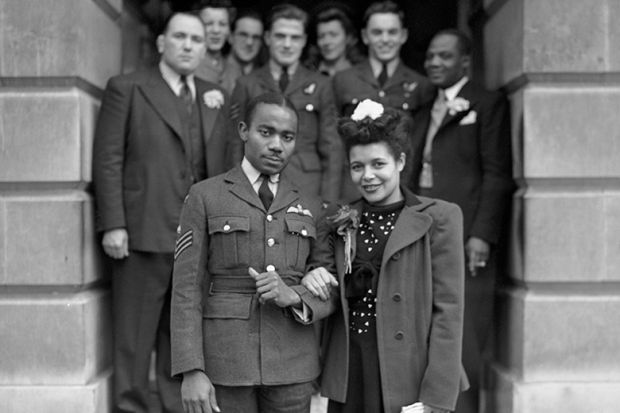Diversity” has become the catchword of Anglo-American liberal elites in recent years, replacing “multiracialism” and “multiculturalism”. Some scholars have thought about, researched and worked in the areas of multiculturalism and diversity for decades and therefore understand every possible nuance. Wendy Webster is one of relatively few British historians who have engaged with the theme over an extended period. The depth of her knowledge and understanding, as well as the fact that she has carried out much new research, makes Mixing It a must-read for anybody who wishes to understand the meaning of diversity in modern British history, revealing both the reality and hollowness of the concept, through the example of the Second World War.
One of Webster’s key aims is to demonstrate the absurdity of the concept of Britain standing alone between the Fall of France and the Nazi invasion of the Soviet Union, which she does by outlining the international nature of the people who fought for Britain. While she provides much detail on the “contribution” of “foreigners” to the British armed forces, her narrative moves beyond simple celebration of military achievement by also studying those who worked in Britain during and immediately after the war, which included hundreds of thousands of German and Italian prisoners of war. One of the many great strengths of this book is that Webster covers the entire range of ethnic groups in Britain during the war, including the Irish, those from the Empire and Commonwealth, but also both black and white American soldiers, refugees from Europe, the Jews who had begun arriving at the end of the 19th century and the whole gamut of Europeans who fled to Britain during the war. As she makes clear, colour represents just one aspect of diversity.
Another great strength of the book lies in the way in which, as Webster promises, it constructs a narrative using numerous personal stories, which she has gathered from, for example, interviews, memoirs and letters in archives. Producing such a volume has become a holy grail for social historians as this subdiscipline of history has moved from the statistical to the personal. Webster proves herself a master of the art.
Yet she also demonstrates the limits of diversity. Britain has in essence practised multicultural racism in its relationship with migrants, in which tolerance and hostility have always lived side by side. Making use of Mass Observation reports, Webster illustrates how one person’s view of, say, encounters between white British women and black servicemen could completely differ from another’s. At the same time, she demonstrates the hypocritical attitude of public bodies, whether the BBC or the Colonial Office, to foreigners in Britain.
Webster has brought together much previous writing on diversity in wartime Britain by considering all groups in one volume. As well as carrying out much new research, she has constructed a beautiful narrative that anyone working on Second World War Britain or who wants to learn the meaning of diversity should read.
Panikos Panayi, professor of European history at De Montfort University, is writing a book provisionally entitled Real Londoners: Immigration and the Making of the World’s Capital for Yale University Press.
Mixing It: Diversity in World War Two Britain
By Wendy Webster
Oxford University Press, 336pp, £25.00
ISBN 9780198735762
Published 15 March 2018
POSTSCRIPT:
Print headline: The UK’s foreign legions muster
Register to continue
Why register?
- Registration is free and only takes a moment
- Once registered, you can read 3 articles a month
- Sign up for our newsletter
Subscribe
Or subscribe for unlimited access to:
- Unlimited access to news, views, insights & reviews
- Digital editions
- Digital access to THE’s university and college rankings analysis
Already registered or a current subscriber? Login




